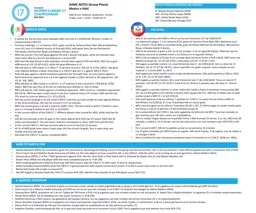PPT-Hai Li
Author : lindy-dunigan | Published Date : 2017-11-03
and Yiran Chen Evolutionary Intelligence Lab EILab Electrical and Computer Engineering University of Pittsburgh Embrace the BRAIN Century EDA Challenges in Neuromorphic
Presentation Embed Code
Download Presentation
Download Presentation The PPT/PDF document "Hai Li" is the property of its rightful owner. Permission is granted to download and print the materials on this website for personal, non-commercial use only, and to display it on your personal computer provided you do not modify the materials and that you retain all copyright notices contained in the materials. By downloading content from our website, you accept the terms of this agreement.
Hai Li: Transcript
Download Rules Of Document
"Hai Li"The content belongs to its owner. You may download and print it for personal use, without modification, and keep all copyright notices. By downloading, you agree to these terms.
Related Documents














